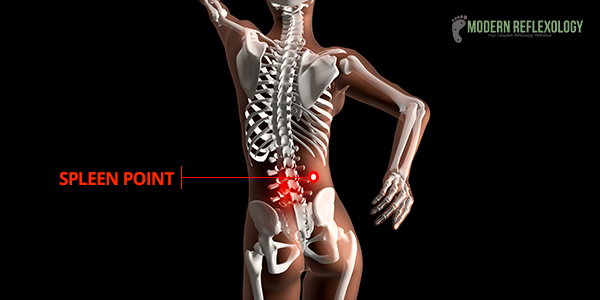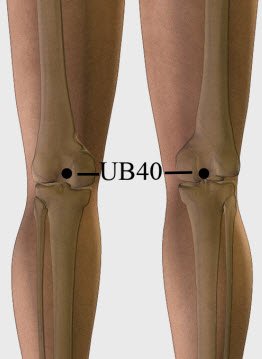What are varicose veins? They are enlarged and swollen veins that are visible under the skin of your legs. So, how do you get impacted this and how do you cure varicose veins in your legs naturally? We will discuss all that and more in this article.
Your veins are the primary transporting vessels of your body. Yes, the very vessels that carry blood from different cells of your body to your heart. Your arteries also do a bit of carrying as it allows your blood to carry the oxygen and nutrients to your cells to provide them with adequate nourishment. Your veins have the additional responsibility of allowing your blood to carry carbon dioxide and other waste products away from your cells to keep the cells clean and healthy.
You are healthy when the blood flow in your body is robust, strong and even. The blood is coerced into your arteries and capillaries with the help of the contractions of your heart. But this force slows down when the blood reaches your veins. This happens because your arteries and capillaries are closer to your heart in comparison to your veins.
However, your body can facilitate a steady flow of blood through your veins in a number of ways, such as the following:
- Your veins contain one-way valves that cause blood flow toward your heart when it experiences either external or internal force.
- The majority of your veins are deeply ingrained in your muscles. Just by dabbling in daily activities, each contraction of your muscles puts mild pressure on your veins, enabling proper blood flow.
- Most of the veins in your body travel horizontally with the companion arteries. With each contraction of your heart, it lets loose a wave force through the arteries. This constant wave force enables the muscular walls of your arteries to pulsate. The side veins then help in the blood flow pulsating through your veins.
How Do Varicose Veins Develop?
The chief reason for developing varicose veins is because the blood does not flow steadily through your veins. The blood flow then gets clogged in certain veins, thus dilating them. A common example of this is hemorrhoids, which are varicose veins that appear on the anal sphincter.
In general, various symptoms of varicose veins increase the overall feeling of pain and discomfort, a few of them are as follows:
- Legs feel heavy and achy
- Muscle cramps
- Throbbing and burning in your legs
- Calves and ankles swell up
- A feeling of discomfort around the vein area
All these symptoms usually become more pronounced during warm days.
Before we find out about the potent acupressure points for varicose veins, we will tell you about a little exercise that you can try to speed up the healing process.
If you already have varicose veins, two additional measures that work like magic on your varicose veins are the exercise mentioned here and an easy hack.
Lie on your back as you raise your legs by resting them against a support such as a wall, a chair or a couch. You can also get relief with the help of graduated compression stockings. This helps exert 30-40 mmHg pressure to your legs. Why does this work? It works because of your femoral arteries, present in each leg, provide fresh blood supply to every region of the lower part of your body.
Best Pressure Points for Varicose Veins
While varicose veins may be a painful condition to endure, acupressure offers a natural and safe treatment solution.
1. Spleen-12 (SP-12)
Find this point, the SP-12, in your pelvic region, which is in the center of the crease where your thigh meets the trunk.
You will find the femoral artery behind each of your knees, where your it becomes your popliteal artery. Healthy blood flow passes through your popliteal artery and you can promote the same by applying pressure on the acupressure point Bladder 40.
2. Bladder-40 (BL-40)
You can locate the BL-40 right in the center of the soft, fleshy area at the back of your knee. You can find this point right in the crease of your knee joint. Some practitioners call this BL-40, while few call it the BL-54 point.
Right from your knee joint, your popliteal artery gives way to the anterior tibial artery, which moves down the front part of your leg in the muscles linked to your shins. Healthy blood flow moves through your anterior, and the tibial artery can be promoted by applying pressure to a point called Stomach-36.
3. Stomach-36 (ST-36)
Locate ST-36 approximately four finger widths below the bottom border of your kneecap, one finger width outside of your shin bone (tibia). Find the right spot by feeling the muscle contraction while you move your ankle joint up and down.
At the back of your knee cap, the popliteal artery gives rise to your posterior tibial artery, which travels down the back of your leg and supplies fresh blood to most of the tissues in the posterior compartment of your leg and ultimately the bottom of your foot. Healthy blood flow through your posterior tibial artery can be promoted by applying pressure to a point called Spleen-6.
4. Spleen-6 (SP-6)
You will locate the SP-6 three finger widths right above your inner ankle bone, as it is a very tender area of your lower calf muscle, found right at the back of your shin bone, also known as the tibia.
In your ankle region, you will find the joining of anterior and posterior tibial arteries to form a cluster or a network of smaller arteries that help the blood, oxygen, and nutrients reach to your feet. The best acupressure point that promotes healthy blood flow through this network of arteries is Liver-3.
5. Liver-3 (LR-3)
You can locate the LR-3 in the soft, fleshy area that is placed between your big and second toes. Move your finger up towards your ankle, this is where the bones start, known as the first and second metatarsals.
Dietary Changes for Varicose Veins
Besides incorporating acupressure for leg pain, make some dietary changes as well, which can make the condition a little more bearable.
Add more potassium-high foods, such as almonds and pistachio nuts. These are a few of the healthy foods that you can add to your diet as they reduce the possibility of water retention in the body.
Salty or sodium-rich foods, in fact, do just the opposite. They enable the retaining of water, so consider cutting down on salty food to reduce water retention.
A few of the potassium-rich foods are as follows,
- Almonds and pistachio nuts
- Potatoes
- Lentils and white beans
- Leafy vegetables
- Fish such as salmon and tuna
It is important to avoid constipation, and in this case, fiber-rich foods can help keep your bowel movements regular. Straining can actually aggravate damaged valves, making things worse.
A few of the high-fiber foods to include are the following: oats, nuts, seeds, wheat, whole-grain foods, legumes, and flaxseeds.
People who are overweight have a higher chance of experience varicose veins, therefore it is best to shed the excess pounds and minimize the pressure on the veins and reduce the possible reduction of swelling and discomfort.
How to cure varicose veins in legs naturally? A few important dietary changes and pressure points for varicose veins can help overcome the condition to a large extent.







Comments are closed